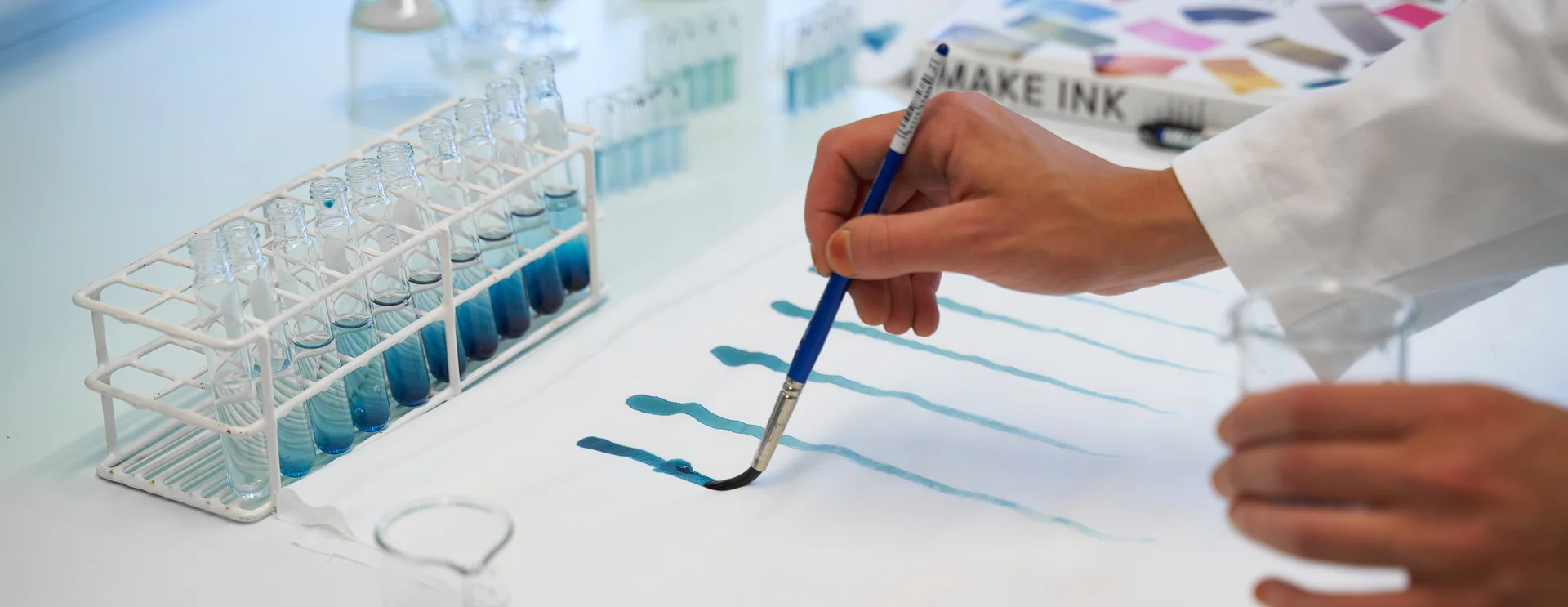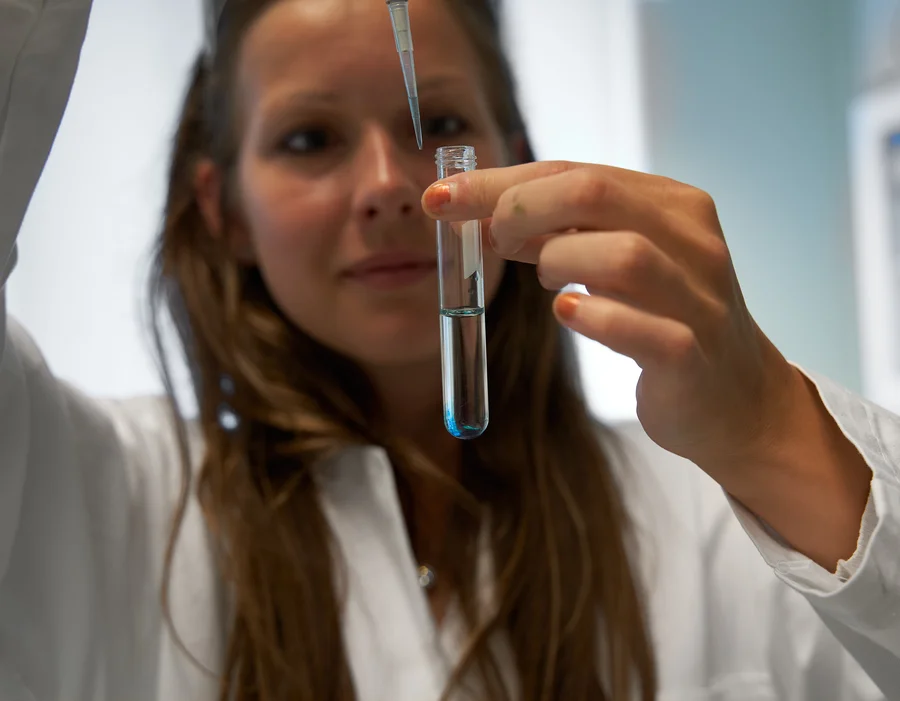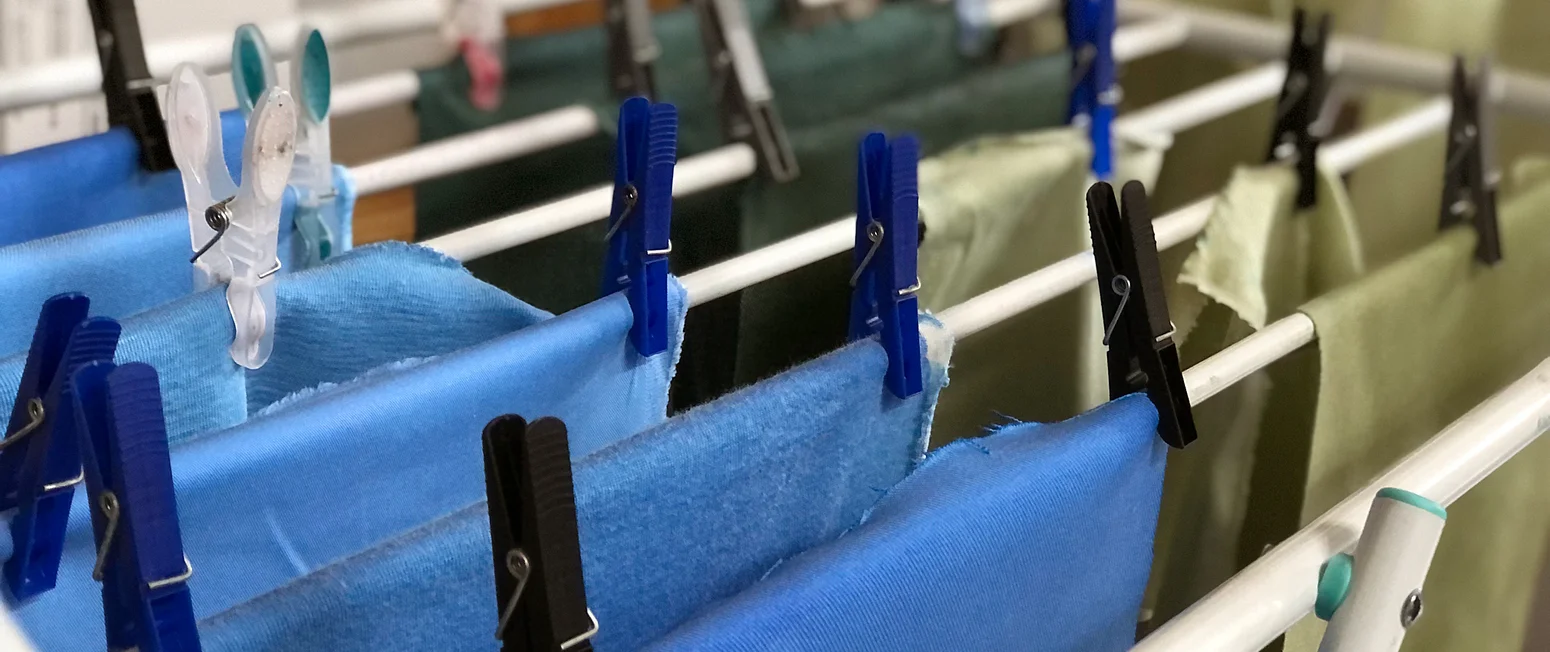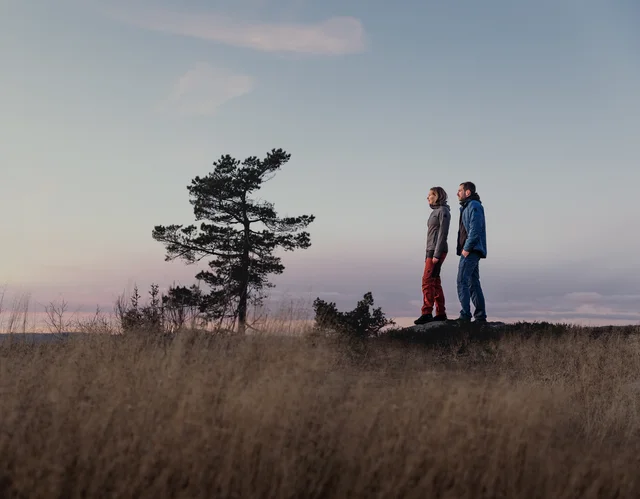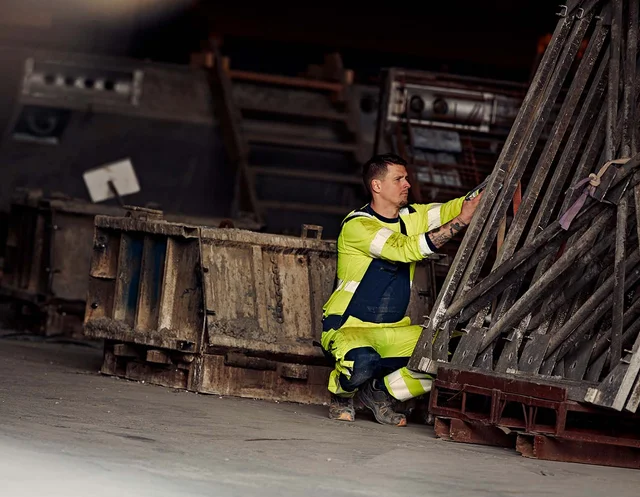An entrepreneur who is passionate about sustainable clothing design. Two researchers who study algae. Nine partners in the public sphere and private industry who contribute know-how and funding. Together they are hoping to solve the challenge of developing a more sustainable way of dyeing clothes – by using an ink based on microalgae. Now the project, which is backed by Fristads, has entered the test phase.
In a narrow room at the dyehouse Sjuhäradsbygdens Färgeri in Kinnahult, Sweden, a miniature dyeing laboratory is giving off a low, wheezing sound while spraying blue algae ink over a piece of white cotton fabric from Fristads. It is the first time this particular pigment is tested and for the application, an advanced digital spraying technique developed by the company Imogo Tech is used. When the dyeing is done, Frida Lindström, Raw Material Developer at Fristads, contentedly inspects the fabric, which is now a deep indigo blue, before it is hung up to dry. Aside from providing the project with test materials, she is there to ensure that the algae-dyed fabric will meet Fristads’ strict quality requirements for workwear.
”We’re looking forward to seeing how we may apply this dye to our products. In the initial phase, we will focus on applying it to cotton garments, partly because the dye is more easily absorbed by cotton than synthetics and partly because that will give us a garment made entirely of natural materials, creating a whole concept,” said Frida Lindström.
Challenges to be solved
But so far, the research project is in the test phase. Developing a brand new dye is a complicated process under normal circumstances. Doing it with natural and unstudied raw materials makes the process even more complex, even for chemists and microbiologists who work with algae on a daily basis. In this phase of the project, the researchers are mostly focusing on developing different shades of blue and green, but the idea is to produce algae pigments from the entire colour spectrum.
”Algae are completely biodegradable, which makes them an attractive option from a sustainability perspective. At the same time, it’s a challenge to make the algae ink stick and become UV resistant, and we’re not quite there yet. But there are tricks you can use,” said Niklas Strömberg, who is the project’s chemist and contract researcher from Industridoktorn®, a brand specialising in research and development for the industry.
The project has aleady garnered attention – Mounid won the award for “Impact Maker of the Year” at the 2022 regional finals of Venture Cup, a Swedish competition for startups, for the potential of the algae ink to make a difference in the textile industry. The idea is to launch the algae ink on the market next year and to start producing it and scale it up after that.
For Fristads, which has high requirements in terms of launderability and quality, it is important to solve the technical challenges to make the algae dyed garments commercially viable. Launderability, UV resistance and other functions will at the end of the day determine whether Fristads can use the algae ink and, if so, for which garments.
”Regardless of the outcome of the algae project, we will be able to learn a lot from it. Contributing to innovation and driving the development forward is very important to us, especially since we strive to lead the industry when it comes to sustainability,” said Frida Lindström.
How algae-dying works
- The algae are cultivated, harvested and dried.
- The algae are refined to algae ink using Mounid’s unique process.
- The algae ink is sprayed onto the fabric using digital technology from Imogo Tech and is then left to dry.
What are microalgae?
Microalgae grow many times faster than plants and produce approximately half of all the oxygen that is needed on Earth. Many microalgae are edible and are cultivated commercially in Asia, where they are popular for cooking and in supplements. Recently, algae farms have also begun to emerge in Europe. Textile dyeing is a new and relatively unexplored application for microalgae.
About the algae ink project:
The algae ink project is run by the startup company Mounid, with support from the innovation environment Wargön Innovation and several other stakeholders in the public and private sector. In addition to Fristads, Baux AB, IVL Swedish Environmental Research Institute, Martinson, Imogo Tech, Sjuhäradsbygdens Färgeri, Industridoktorn® and Woolpower are participating in the project, which runs until fall of 2023. The project is funded by Vinnova.
More content for you:
Our initiatives
To reduce the environmental impact connected to our operation we have initiated a number of activities to promote a sustainable development.
Read more >
Sustainable products
To compete with quality rather than price has been a key principle for Fristads from the start. For us, making quality garments is the core of our sustainability work.
Our own laboratory
In our own laboratory we test and check the physical properties of our materials - an important part of product development to ensure great quality.
Read more >

